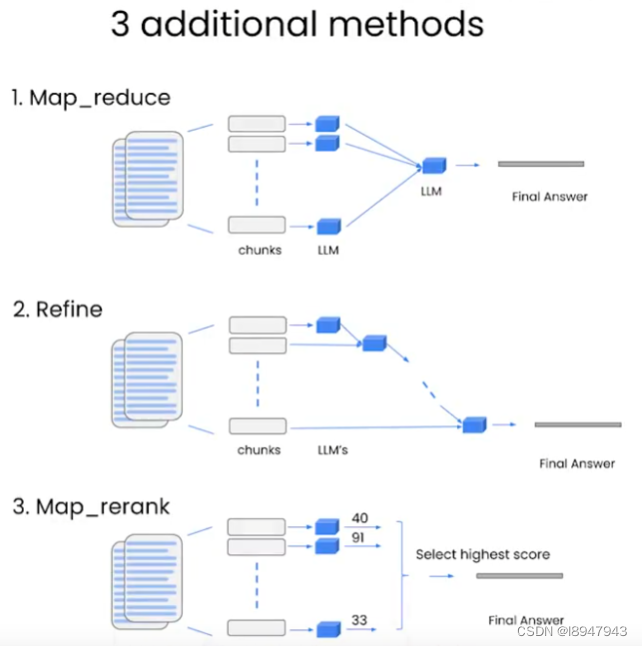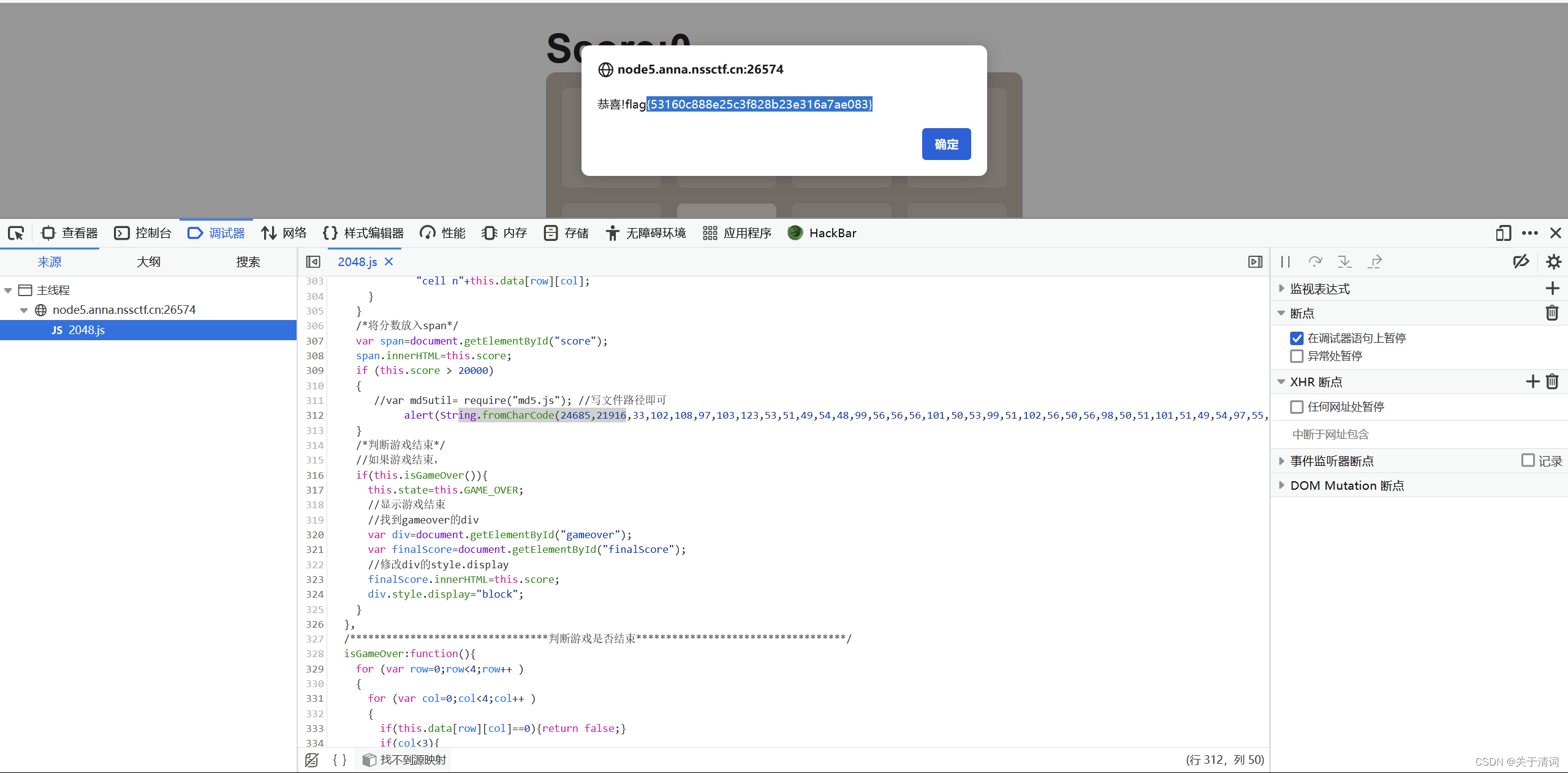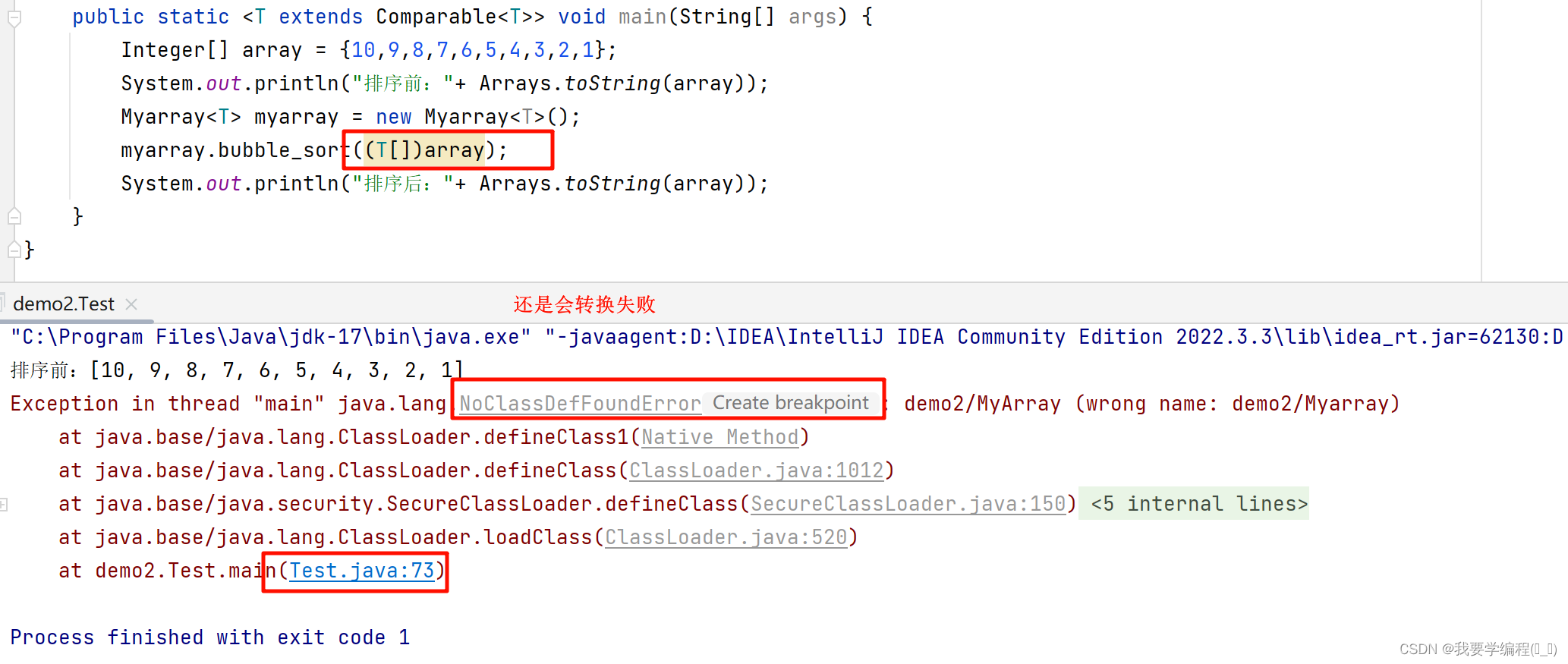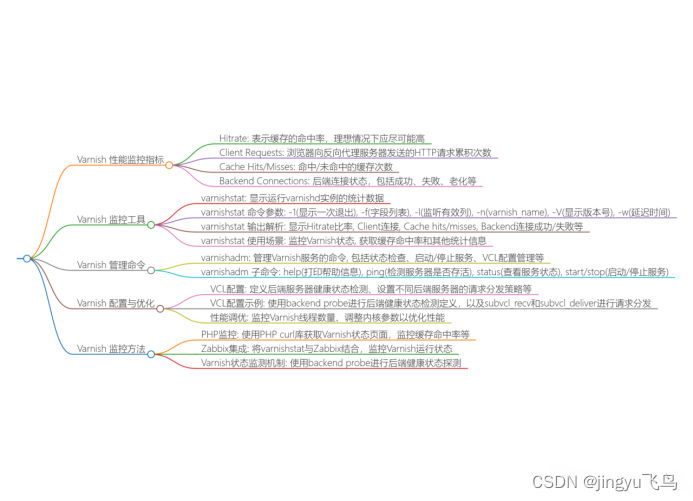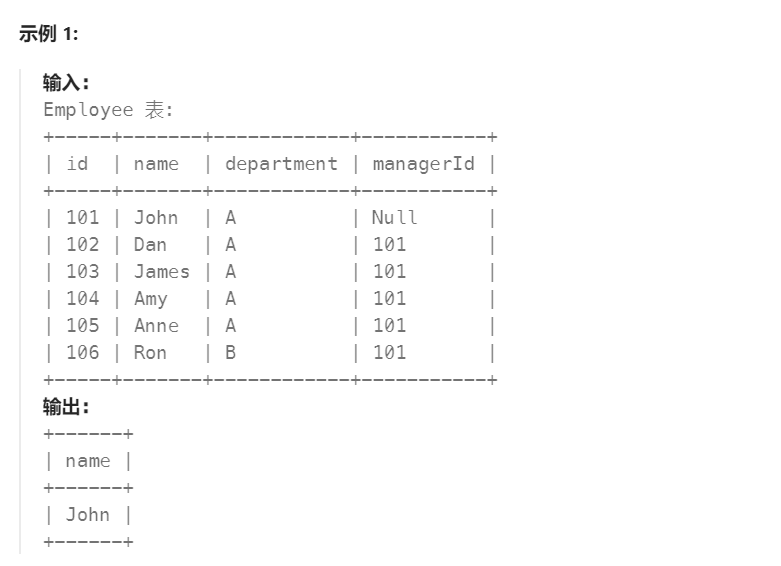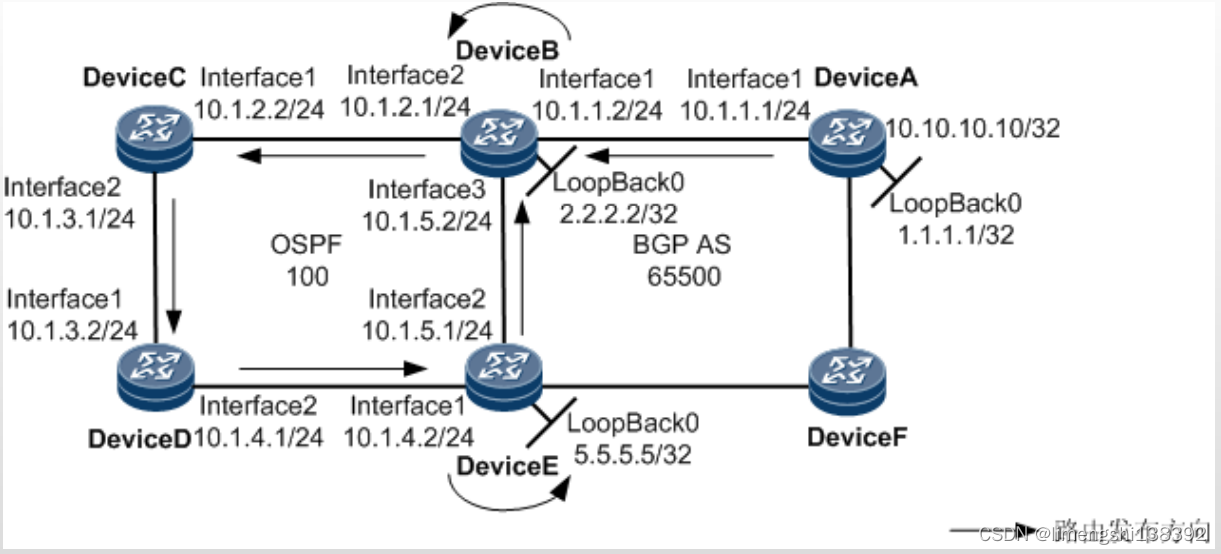前言
代码中不可避免地会出现复杂的if-else条件逻辑,而简化这些条件表达式是一种提高代码可读性极为实用的技巧。
在 Python 中,有多种方法可以避免复杂的 if-else 条件逻辑,使代码更加清晰和易于维护。
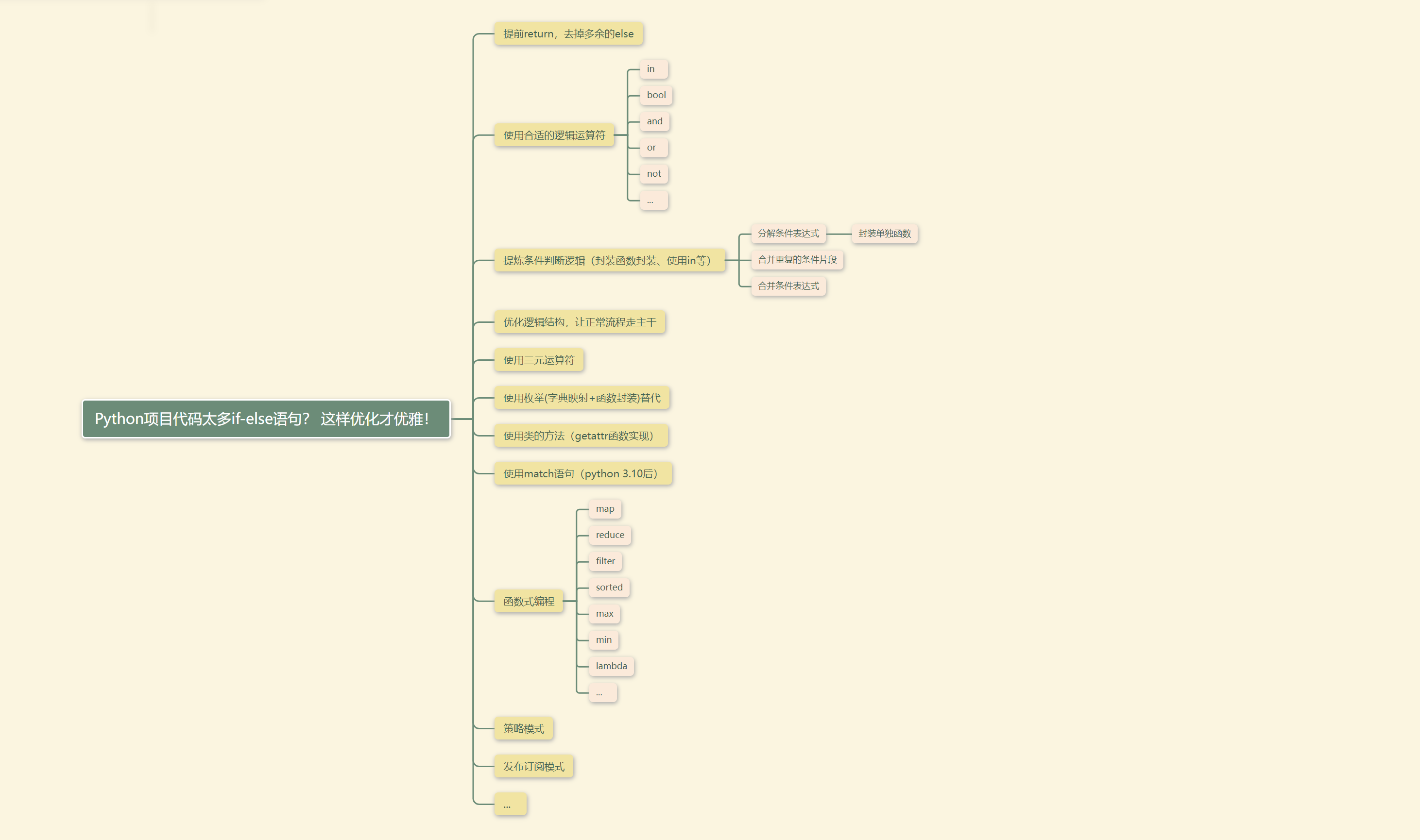
筑基期
提前 return,去掉多余的 else
在 Python 中,使用"提前返回"(early return)可以避免深层嵌套的
if-else语句,并且使代码更加清晰。
场景:电商平台为首次购买的用户在结账时提供优惠券。如果用户不是首次购买,或者购物车中的商品总额低于某个阈值,则不提供优惠券。
未使用提前返回的原始代码:
def apply_coupon(user, cart):
if user.is_first_purchase:
if cart.total_amount >= 100:
cart.apply_discount(10) # 应用10%的折扣
print("A coupon has been applied to your purchase.")
else:
print("Your purchase does not meet the minimum amount for a coupon.")
else:
print("Coupons are only available for first-time purchases.")
return cart
使用提前返回优化后的代码:
def apply_coupon(user, cart):
# 检查是否为首次购买
if not user.is_first_purchase:
print("Coupons are only available for first-time purchases.")
return cart
# 检查购物车总额是否满足条件
if cart.total_amount < 100:
print("Your purchase does not meet the minimum amount for a coupon.")
return cart
# 应用优惠券
cart.apply_discount(10) # 应用10%的折扣
print("A coupon has been applied to your purchase.")
return cart
首先,定义用户和购物车类,以及必要的属性和方法:
class User:
def __init__(self, is_first_purchase):
self.is_first_purchase = is_first_purchase
class Cart:
def __init__(self, total_amount):
self.total_amount = total_amount
self.discount = 0
def apply_discount(self, percentage):
self.discount = self.total_amount * (percentage / 100)
self.total_amount -= self.discount
def __str__(self):
return f"Cart(total_amount={
self.total_amount}, discount={
self.discount})"
然后,我们创建两个用户和两个购物车对象。
- 第一个用户是首次购买,购物车总额为150,满足应用优惠券的条件,因此会看到优惠券被应用,并且购物车总额减少。
- 第二个用户不是首次购买,购物车总额为50,不满足应用优惠券的条件,因此会看到相应的提示信息,购物车总额不变。
# 创建用户对象,假设是首次购买
user = User(is_first_purchase=True)
# 创建购物车对象,假设购物车总额为150
cart = Cart(total_amount=150)
# 打印原始购物车状态
print("原始购物车状态:", cart)
# 调用apply_coupon函数
cart = apply_coupon(user, cart)
# 打印应用优惠券后的购物车状态
print("应用优惠券后的购物车状态:", cart)
# 再次创建一个购物车对象,假设购物车总额为50,且用户不是首次购买
another_user = User(is_first_purchase=False)
another_cart = Cart(total_amount=50)
# 打印原始购物车状态
print("\n原始购物车状态:", another_cart)
# 调用apply_coupon函数
another_cart = apply_coupon(another_user, another_cart)
# 打印应用优惠券后的购物车状态(实际上不会应用优惠券)
print("应用优惠券后的购物车状态(实际上不会应用优惠券):", another_cart)

在这个优化后的版本中,我们使用了提前返回来简化逻辑流程:
- 首先检查用户是否为首次购买,如果不是,则立即返回,不再执行后续代码。
- 然后检查购物车总额是否满足优惠券的最低限额,如果不满足,同样立即返回。
- 只有当这两个条件都满足时,才应用优惠券并打印相应的消息。
提前返回的好处:
- 逻辑清晰:每个条件都被单独检查,并且不满足时立即返回,逻辑流程非常清晰。
- 减少嵌套:避免了深层嵌套的
if-else结构,使得代码更加扁平化。 - 易于维护:当需要修改条件或者添加新的条件时,可以很容易地在函数开头添加新的检查。
- 避免冗余:去掉了不必要的
else语句,因为每个if语句都有明确的返回点。
通过这种方式,提前返回使得代码更加简洁、直观,并且易于理解和维护。
使用合适的逻辑运算符
在Python开发中,逻辑运算符and、or、in、bool()和not等可以帮助我们简化条件判断,从而减少if语句的使用。以下是使用逻辑运算符优化if语句的一个电商例子。
场景:电商平台想要为特定条件下的用户提供优惠券。条件包括:
- 用户必须是新用户(
is_new属性为True)。 - 用户的购物车中必须包含至少一种电子产品(
category属性为"electronics")。 - 用户的购物车总价必须超过一定金额(例如200元)。
未使用逻辑运算符的原始代码:
from collections import namedtuple
def apply_coupon(_cart_items, _user):
if _user.is_new:
if any(item['category'] == 'electronics' for item in _cart_items):
if sum(item['price'] * item['quantity'] for item in _cart_items) > 200:
# 应用优惠券逻辑
print("Coupon applied!")
else:
print("Cart total is less than 200.")
else:
print("No electronics in cart.")
else:
print("User is not new.")
# 示例用户和购物车
User = namedtuple('User', ["is_new"])
user = User(is_new=True)
cart_items = [
{
'name': 'Laptop', 'category': 'electronics', 'price': 150, 'quantity': 1},
{
'name': 'Book', 'category': 'books', 'price': 50, 'quantity': 2},
]
apply_coupon(cart_items, user) # Coupon applied!
使用逻辑运算符优化后的代码:
from collections import namedtuple
def apply_coupon(cart_items, user):
# 使用逻辑运算符组合条件
new_user = user.is_new
has_electronics = any(item['category'] == 'electronics' for item in cart_items)
cart_total = sum(item['price'] * item['quantity'] for item in cart_items) > 200
# 如果所有条件都满足,则应用优惠券
if new_user and has_electronics and cart_total:
print("Coupon applied!")
else:
print("Coupon not applied.")
# 示例用户和购物车
User = namedtuple('User', ["is_new"])
user = User(is_new=True)
cart_items = [
{
'name': 'Laptop', 'category': 'electronics', 'price': 150, 'quantity': 1},
{
'name': 'Book', 'category': 'books', 'price': 50, 'quantity': 2},
]
apply_coupon(cart_items, user) # Coupon applied!
在这个优化后的版本中,我们首先使用逻辑运算符来单独评估每个条件:
new_user检查用户是否为新用户。has_electronics检查购物车中是否有电子产品。cart_total检查购物车总价是否超过 200 元。
然后,我们使用and运算符来确保所有条件都满足,只有当这个组合条件为真时,才应用优惠券。
使用逻辑运算符的好处包括:
- 代码简化:减少了嵌套的
if语句,使代码更加简洁。 - 逻辑清晰:每个条件的评估清晰明了,易于理解和维护。
- 易于调整:如果需要修改条件或添加新条件,只需调整逻辑表达式即可。
通过这种方式,逻辑运算符帮助我们编写出更加Pythonic和易于维护的代码。
提炼条件判断逻辑
当条件判断变得过于复杂时,它不仅难以理解,还可能导致代码维护困难。将复杂的条件判断逻辑提炼成独立的函数是一种很好的实践,这样可以使代码更加清晰、可读性更高,并且易于维护。
假设我们有一个函数,根据用户的购物车中的商品种类和数量来决定是否提供折扣。原始的代码可能包含多个嵌套的if-else语句,如下所示:
def calculate_discount(_cart_items):
discount = 0
if 'electronics' in _cart_items:
if len(_cart_items['electronics']) >= 3:
discount += 10
if 'laptop' in _cart_items['electronics']:
discount += 5
elif 'clothing' in _cart_items:
if len(_cart_items['clothing']) >= 5:
discount += 15
# ... 更多条件
return discount
这个函数的可读性很差,很难一眼看出它在做什么。我们可以将复杂的条件判断逻辑提炼成独立的函数,如下所示:
# 定义检查商品的函数
def has_bulk_electronic_items(_cart_items):
return len(_cart_items.get('electronics', [])) >= 3
def has_laptop_in_electronics(_cart_items):
return 'laptop' in _cart_items.get('electronics', [])
def has_many_clothing_items(_cart_items):
return len(_cart_items.get('clothing', [])) >= 5
# 定义计算折扣的函数
def calculate_discount(_cart_items):
discount = 0
if has_bulk_electronic_items(_cart_items):
discount += 10 # 电子产品数量超过3个,折扣10%
if has_laptop_in_electronics(_cart_items):
discount += 5 # 电子产品中有笔记本电脑,额外折扣5%
if has_many_clothing_items(_cart_items):
discount += 15 # 服装数量超过5个,折扣15%


